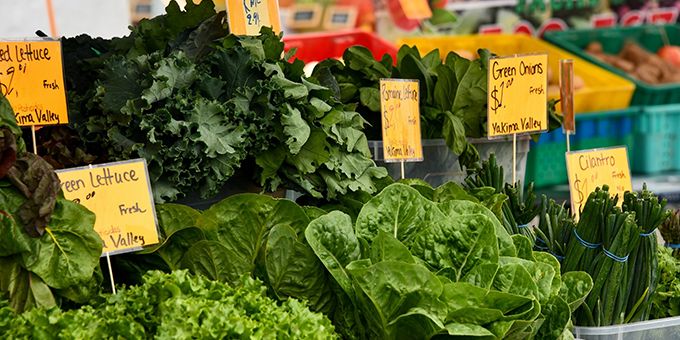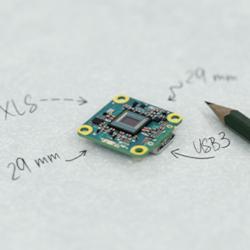Leafy greens are some of the best plants to grow hydroponically, and lettuce is an excellent plant to start out growing hydroponically. Here are some tips and tricks that will help you grow your own lettuce to reduce the growing retail prices.
 2022 Top Article - How Hydroponic Farming Can Reduce the Cost of Lettuce
2022 Top Article - How Hydroponic Farming Can Reduce the Cost of Lettuce

Article from | Eden Green Technology
If you’re a fan of salads and other leafy dishes, you may have noticed the rapid increase in the price of lettuce. If you’re wondering: how much does lettuce cost? The answer might shock you. The price of lettuce has tripled in the past several months, leaving the average consumer to wonder why. The truth is, lettuce prices have been fluctuating up and down repeatedly over the past several years for various reasons. This article will discuss the reasons for the price hike and how to save money by growing lettuce indoors.
Why the Price Hikes?
The primary reason for the price change is climate-related. Summer heatwaves of increasing intensity bring the price of lettuce up each year, frustrating consumers around the globe. Lettuce plants are severely affected by heat. As temperatures rise, the leaves wilt and die, no longer meeting the quality standards for farmers, grocery stores, restaurants, or consumers. A particularly bad summer can send the price of lettuce skyrocketing, but so can a harsh winter. While lettuce is relatively frost-hardy, a harsh winter can slow harvest and make lettuce more expensive for consumers.
Recalls due to contaminants can also cause lettuce prices to increase. Lettuce can be contaminated just like any other produce, and it may be particularly susceptible due to its growing conditions. Likely you’ve heard of the outbreaks of E. Coli in romaine lettuce. Each time recalls occur, the prices of other lettuces go up as people seek to replace romaine lettuce. The next time a recall happens, there will likely be another increase in lettuce prices.
How to Grow Your Own Lettuce
Leafy greens are some of the best plants to grow hydroponically, and lettuce is an excellent plant to start out growing hydroponically. Here are some tips and tricks that will help you grow your own lettuce to reduce the growing retail prices.
Which Varieties Can You Grow?
You can grow any variety of lettuce hydroponically, but these are some of the best suited for easy growth:
-
Butterhead: A lettuce with bright green leaves and a sweet, buttery flavor.
-
Romaine: You likely love romaine for its long, dark leaves and crisp, sweet flavor.
-
Green and Red Oakleaf: Named for the shape of its leaves, oakleaf lettuces offer a delicate, tender leaf for salad mixes and sandwiches.
-
Arugula: The spiky leaves of this lettuce offer an earthy flavor with a peppery kick.
How Long Does Lettuce Take to Grow Hydroponically?
Almost all plants grow faster hydroponically than they do in soil-based farming methods. This is because the plant’s light, nutrition, and water are all under your complete control. You can harvest butterhead and romaine lettuce in as early as three to four weeks, or sturdier lettuce like iceberg in six to eight weeks. In general, most hydroponic leafy greens offer 11-13 harvests per year with the right greenhouse conditions.
How Many Hours of Light Does Hydroponic Lettuce Need?
If a plant can get as much natural sunlight as possible, this is a huge bonus for its growing potential. For example, Eden Green Technology’s greenhouses run on 99% sunlight. Ideally, any lettuce would get 12 hours or more light per day, but if you see any burning or if the plants are growing slowly, you can decrease or increase the light exposure.
What is the Best Nutrient for Hydroponic Lettuce?
Since your lettuce is not planted in soil, it needs added nutrients to grow to its full potential and stay healthy. There are a variety of premade mixes of nutrients available online for you to try that will help your plant grow and succeed. More advanced growers can make nutrient mixes themselves. This method will save money in the long run, but starting with the premade mixes is best for beginners.
Start Growing with Eden Green Technology Today!
If you’re looking to start your own commercial farm, Eden Green Technology builds state-of-the-art greenhouses that exceed all of your hydroponic growing standards. With a focus on quality and sustainability, our greenhouses are sure to produce more delicious and healthier plants than you can find on the market today. If you want to learn more about what we have to offer, visit our website today or read more about hydroponics on our blog.
The content & opinions in this article are the author’s and do not necessarily represent the views of AgriTechTomorrow
Comments (0)
This post does not have any comments. Be the first to leave a comment below.
Featured Product


